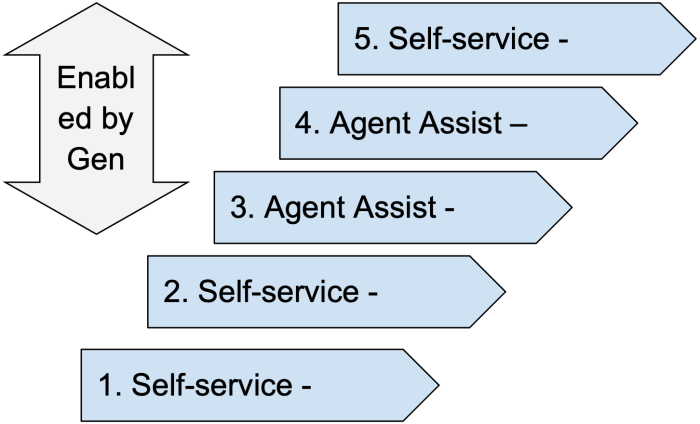How Generative AI is transforming the member experience (while also driving efficiency)

The following is an advanced excerpt from an upcoming thought piece from Glia and provides an overview of our upcoming webinar on AI to improve member services.
Bill Gates once called ChatGPT “the most important advancement in technology since the Graphical User Interface (GUI),” and for good reason. It not only will provide us with many new functionalities and tools, but will completely change the way that we use computers and technology in general. In the same way that we went from typing commands for the DOS operating system to simply pointing and clicking in Windows, generative AI may open up new possibilities in conversational design where users can simply speak in plain language to get things done.
What is Generative AI capable of?
As the general public becomes more accepting of interacting with generative AI, the number of use cases being seen is increasing as people experiment with its capabilities.
Larger Language Models (LLMs) and Generative AI excel in certain areas, such as the ability to provide creative responses when there is no particular right or wrong answer. Generative AI is best at answering open-ended questions, but less so at providing answers where specificity and accuracy are needed. Asking ChatGPT to brainstorm blog ideas, summarize a piece of text, or write a poem will yield better results than asking for a specific fact or information. Its ability to produce natural-sounding responses also makes Generative AI great for producing answers to FAQs, as well as writing social media posts or video scripts. As the technology’s capabilities continue to grow, LLMs will soon be able to take on more complex tasks, such as ones involving logical reasoning and problem-solving.
Boston Consulting Group estimates that generative AI could increase productivity by 30% to 50%—or more. Also, according to their 2022 survey of global customer service leaders, 95% expect their customers to be served by an AI bot at some point in their service interactions within the next three years. There are many various opportunities to implement this new AI technology into all aspects of the contact center experience, from member-facing implementations to new toolsets for both agents and managers to take advantage of.
How will Generative AI help member service?
The contact center has come a long way in the past couple of decades. A whole expanded utility belt of different AI-powered tools has already made human reps much more productive, greatly increasing servicing efficiencies and revenue opportunities. From member-facing AI chatbots answering user questions automatically or agents utilizing co-pilot features, such as autocomplete functionality, AI is already driving new efficiencies. It even provides fast summarizations and transcriptions for analytics and review purposes.
LLMs have the power to significantly expand what can be automated, performing critical member service tasks that are far beyond the capacities of earlier technologies. These models are trained on vast amounts of data and can recognize, classify, and create sophisticated text and speech with speed and precision. Over time—and likely quite quickly—generative AI will become more and more embedded in the member service function.

This chart showcases our framework for AI and Gen AI adoption by financial institutions. Many institutions are already leveraging AI as outlined in the first two stages. Stages 3-5 is where generative AI comes into play and represents a great opportunity.
- Stage 1: Simple self-service enabled by GUIs, with users pointing and clicking their way through websites to find information.
- Stage 2: The introduction of simple chatbots, allowing users to help themselves through natural language with simple inquiries, passing more complex issues to human support.
- Stage 3: Human agents can be assisted by AI to handle complex inquiries, providing quickly generated answers to questions for faster resolution and greater efficiency.
- Stage 4: AI can provide human agents better insight and help drive proactive interactions with users
- Stage 5: We expect to see LLM-powered chatbots capable of assisting users with complex inquiries and even reaching out to members directly, with no human input needed.
But humans will always be in the loop to monitor performance and address mistakes or shortcomings—and, of course, step in where the human touch is required. Contrary to popular belief, AI has not triggered a significant decline in the number of agents at most contact centers largely because member service teams have taken on new, more strategic responsibilities as repetitive tasks are automated. Helping members complete a loan application, for example.
There are certain areas where humans will always excel over AI tools: Humans will always be needed for situations that require empathy, and will usually be preferred for complex, high-stakes situations such as a big purchase or decision. Maintaining human interactions within these moments, while automating the rest, is the best way to take full advantage of AI while not losing the important human touch.
To learn more about how Generative AI is transforming member service join us November 8 for a discussion with the former Head of Customer Support & Community at OpenAI, maker of ChatGPT, and Char Sears, VP of the Member Experience at Unitus Credit Union.




